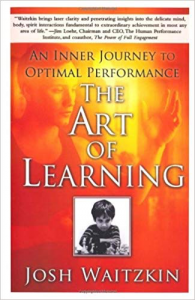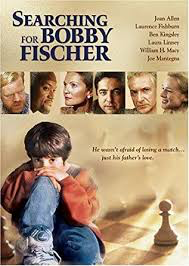Coming over to a new thread from the NZ Rookies Thread.
Last year in Aspen, one of our themes from season training was the use of external cues in learning a motor control skill. Our training site has an academic paper by Wulf, Shea and Lewthwaite titled "Motor skill learning and performance: a review of influential factors." One of the points of the paper was that organizing practice in learning a motor control skill by focusing on external cues significantly reduced the time to achieve "automaticity" of the movements and increased retention relative to those focusing on internal cues. External cues are those that are oriented to the effects of the movement as opposed to internal cues, which focus on the movements themselves. From the paper, the example of an external cue might be the swing of the club as opposed to the swing of their arms. The paper is copyrighted, but perhaps it is ok to include a snapshot of the first figure:
 This result, and the paper that showed it, intrigued me, so I started trying to find out more about this area of academic research. I found that there is a huge field study called motor control learning, and that it has what appears to be a large amount of experimental research that documents how people learn motor control skills and, most importantly, what are the most effective ways to learn a motor control skill. When one starts probing the area, you find that motor control theory spans multiple disciplines, from kinesiology to psychology, and from neurology to physical and occupational therapy. One can find all sorts of interesting things that might have application to teaching skiing, yet I've seen almost no mention of it in the ski instruction literature. Sure, PSIA-RM picked up Fitts and Posner, but I've not really seen Ann Gentile's model discussed, and it appears that Nikolai Bernstein, who developed his model well before either of them and whose model appears to be more generally accepted in academic circles today than the other two, has not been used at all, as far as I can tell.
This result, and the paper that showed it, intrigued me, so I started trying to find out more about this area of academic research. I found that there is a huge field study called motor control learning, and that it has what appears to be a large amount of experimental research that documents how people learn motor control skills and, most importantly, what are the most effective ways to learn a motor control skill. When one starts probing the area, you find that motor control theory spans multiple disciplines, from kinesiology to psychology, and from neurology to physical and occupational therapy. One can find all sorts of interesting things that might have application to teaching skiing, yet I've seen almost no mention of it in the ski instruction literature. Sure, PSIA-RM picked up Fitts and Posner, but I've not really seen Ann Gentile's model discussed, and it appears that Nikolai Bernstein, who developed his model well before either of them and whose model appears to be more generally accepted in academic circles today than the other two, has not been used at all, as far as I can tell.
So, I thought we might start a thread here to see if anyone has actual knowledge of this area and has successfully used some of these ideas in their own teaching. Perhaps @Brian Finch? In any case, here are a few things that are in the public domain that those interested might choose to read:
http://www.trenerforeningen.org/magill-feedback.pdf
https://www.krigolsonteaching.com/uploads/4/3/8/4/43848243/chapter_12-_the_stages_of_learning.pdf
https://www.scienceforsport.com/skill-acquisition/#toggle-id-1
If you have other references that might be useful, please post them up -- I'm no expert, but am interested in this!
Mike
Last year in Aspen, one of our themes from season training was the use of external cues in learning a motor control skill. Our training site has an academic paper by Wulf, Shea and Lewthwaite titled "Motor skill learning and performance: a review of influential factors." One of the points of the paper was that organizing practice in learning a motor control skill by focusing on external cues significantly reduced the time to achieve "automaticity" of the movements and increased retention relative to those focusing on internal cues. External cues are those that are oriented to the effects of the movement as opposed to internal cues, which focus on the movements themselves. From the paper, the example of an external cue might be the swing of the club as opposed to the swing of their arms. The paper is copyrighted, but perhaps it is ok to include a snapshot of the first figure:
So, I thought we might start a thread here to see if anyone has actual knowledge of this area and has successfully used some of these ideas in their own teaching. Perhaps @Brian Finch? In any case, here are a few things that are in the public domain that those interested might choose to read:
http://www.trenerforeningen.org/magill-feedback.pdf
https://www.krigolsonteaching.com/uploads/4/3/8/4/43848243/chapter_12-_the_stages_of_learning.pdf
https://www.scienceforsport.com/skill-acquisition/#toggle-id-1
If you have other references that might be useful, please post them up -- I'm no expert, but am interested in this!
Mike


